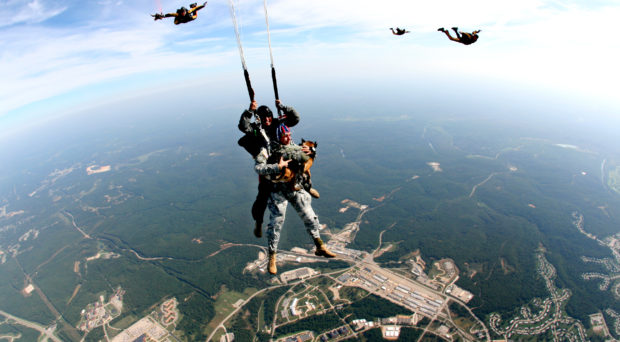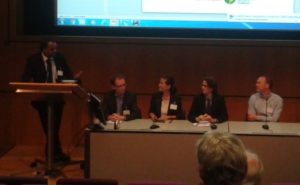
Toward elimination
As many malaria control programs progress towards elimination, more diligent surveillance and monitoring programmes become the focus of elimination programs. Mass Drug Administration (MDA) strategies are being considered for the elimination of the few parasites left standing. However, the treatment of large populations regardless of their infection status can be costly and -in areas where disease burden is low- can be met with resistance from the local population. To overcome this, Mass Screen And Treat (MSAT) programs are being considered instead. The major drawback to this strategy is that the currently used field diagnostics (i.e, microscopy and RDTs) are insufficiently sensitive to detect infections with very low parasitaemias. Consequently, most of the focus in malaria diagnostics has turned to developing sensitive tools for the detection of such low level infections, often in asymptomatic individuals, that are better suited for field-use.

ISNTD d3 meeting, London
Having recently attended the International Society for NTDs (ISNTD) meeting at the Wellcome Trust Centre in London, I am optimistic about the prospects of future diagnostics. I was truly amazed at the level of innovation showcased at the meeting, especially as a PhD student just entering this field.
During the meeting, there was heavy emphasis put on the importance of integrating new diagnostics into an “E-health system”. That is, incorporating in-built data-transmission technologies that are desirable for real time surveillance, QC monitoring and for optimising supply chain management. In terms of improving clinical practice or patient outcomes however, a recent Cochrane review found no evidence that the use of electronic health information (EHI) had any effect on these. Despite this, these systems are still useful for non-clinical projects, e.g in the validation of new tools, and so the International Diagnostics Centre (IDC) is “committed to leveraging these technological advances to improve the diagnosis of NTDs”.
“Progress through partnerships” is the ISNTD’s motto, and it was evident how much more efficiently products are developed though working with different groups. Such collaborations have led to the development several open-platform diagnostics including the Trulab Uno dx, which includes assays for MTb, malaria, chikungunya and many more viruses. Open-platforms allow multiple detection targets from different pathogens, or from the host, to be selected and run on the same machine. Still, these are platforms that require lab space, trained staff and power- rendering them only suitable for reference laboratories. Much effort has been put into the transfer of these sensitive molecular tests from the lab to the field. One of the biggest advances toward this has been the use of isothermic reactions, which eliminate the need for costly and heavy thermocyclers. Such technologies, including LAMP and NALFIA, have taken that a step further and no longer require readout devices such as fluorescence readers or spectrometers. Furthermore, non-invasive diagnostics methods for malaria are being pursued as an ideal.

Malaria breath
Last year it was shown that unique, volatile organic compounds (VOC) could be detected by gas chromatography–mass spectrometry (GC-MS) in the breath of patients infected with malaria. The level of VOC detected appeared to correlate with the patient’s parasitaemia even at very low levels, which suggests a sensitive method for diagnosis of clinical and asymptomatic malaria. With funding from the Bill & Melinda Gates foundation, the Commonwealth Scientific and Industrial Research Organisation (CSIR, QIMR Berghofer Medical Research Institute) together with the Australian National University, developed a breathalyser-like product that is currently being validated in field trials in Malawi, Bangladesh, Malaysia and Sudan. Volunteers will provide a breath sample as they undergo the normal testing and treatment. Volatiles in the breath are stabilised by reagents in the specimen tubes and then transported to the Canberra or St. Louis for chemical and statistical analysis. If an alternative platform to GC-MS can be developed to analyse the samples, this non-invasive, cheap technique could eliminate the need for skilled technicians and reduce the cost for such a test.
Sniffer dogs
Durham University and the London School of Hygiene and Tropical Medicine have been awarded a Grand Challenges and Explorations grant to explore the possibility of employing sniffer dogs to detect malaria in patients. The project is based on the principle whereby individuals infected with malaria are more attractive to feeding mosquitoes, presumably though sensing chemo-attractants released by the host. Since dogs are extremely sensitive to smell, it is thought that might also be able to detect the volatiles produced by infected indiviuals. The use of sniffer dog has most recently been approved by the NHS to detect certain types of cancer. The project will involve collecting urine and sweat from 400 children as part of a collaboration with MRC unit in the Gambia and the UK charity Medical Detection Dogs. Dogs will be trained to distinguish between sweat from uninfected and infected children. Using dogs would eliminate the need for skilled technicians. They are mobile, cheap to keep, and diagnosis would be almost immediate.
Beyond the ideal diagnostic
Last year, I reviewed some of the most innovative diagnostics of 2014 and most recently Anja Choon reviewed a new urine test for malaria. Microscopy and RDTs are still the gold standard and probably will be for some time, so what is the major barrier in getting these innovations out to the field? During the closing sessions of the ISNTD d3 meeting, Dr Laurence Flevaud from Medecines Sans Frontieres (MSF) delved into some of the challenges that are faced in remote settings, even when armed with the best diagnostics. She highlighted the massive logistical problems in delivering products/reagents to the end user, the need for uncompromising Target Product Profiles in order to produce a functional field-worthy tool and ultimately the need for development scientists to work closely with local NGOs who are acquainted with the cultural, logistical and political barriers that could pose problems later during implementation. Her overriding message was to incorporate or at least think about the implementation strategy for your product from the offset in order to prevent perfectly good diagnostic tools taking a slow and costly trip to the ‘diagnostics graveyard’. With regards to this, it’s interesting to think about how the deployment and scale-up of malaria-sniffing dogs could happen.

Comments